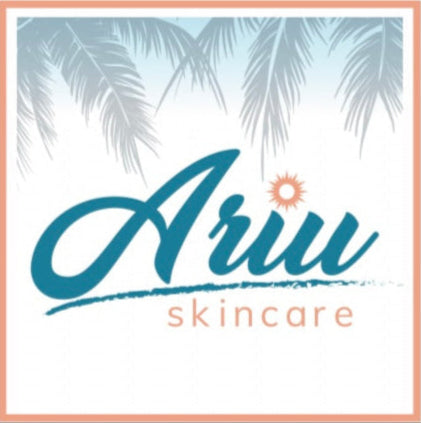Reduce Post-Inflammatory Erythema: Best Tips and Treatments
Share
Struggling with persistent red spots after acne or other skin flare-ups? You’re not alone. Many individuals experience lingering redness known as post-inflammatory erythema (PIE) after acne, dermatitis, or other inflammatory skin conditions. In this blog post, we’ll dive into the causes of PIE, compare it with post-inflammatory hyperpigmentation (PIH), and explore effective treatments to help reduce these stubborn red marks and restore your skin’s healthy glow.
What Is Post-Inflammatory Erythema (PIE)?
Post-inflammatory erythema (PIE) refers to the red or pink discoloration that remains on the skin after inflammation has subsided. Unlike post-inflammatory hyperpigmentation (PIH), which results in dark brown or black spots caused by excess melanin production, PIE is related to the dilation and damage of blood vessels in the affected area. These red marks can be particularly frustrating because they can linger for weeks or even months after the initial inflammation has healed.
How PIE Happens in Fitzpatrick Skin Types I-III
PIE is more common in individuals with lighter skin tones, specifically those with Fitzpatrick skin types I-III. These skin types, characterized by fair to light skin that burns easily and tans minimally, are more prone to visible redness because the skin's thinner nature and lower melanin content do not obscure the underlying blood vessels as much as in darker skin tones.
When the skin experiences inflammation—whether from acne, eczema, or even an injury—the body’s natural response is to send blood to the area to aid healing. However, in some cases, the blood vessels in the affected area become dilated and damaged, leading to the persistent red or pink marks that we see as PIE.
PIE vs. PIH: Understanding the Difference
It’s easy to confuse PIE with post-inflammatory hyperpigmentation (PIH), but they are distinct conditions:
- PIE (Post-Inflammatory Erythema): Appears as red or pink marks due to dilated blood vessels. It is more common in lighter skin tones (Fitzpatrick I-III).
- PIH (Post-Inflammatory Hyperpigmentation): Appears as dark brown or black spots caused by excess melanin production. It is more common in darker skin tones (Fitzpatrick IV-VI).
While both PIE and PIH can occur after inflammation, PIE is specifically related to changes in blood vessels, whereas PIH is related to pigmentation.
Treating and Managing PIE
Treating PIE can be challenging because it involves the blood vessels rather than pigmentation. However, several approaches can help reduce the appearance of PIE and support the skin's healing process.
1. Topical Treatments
While topical treatments may not directly target blood vessels, they can help reduce inflammation, promote healing, and improve the overall appearance of the skin, and are safe during pregnancy and breastfeeding.
- Niacinamide: A form of Vitamin B3, niacinamide is known for its anti-inflammatory properties. It can calm the skin, reduce redness over time, and strengthen the skin barrier. Incorporate niacinamide into your routine through serums or moisturizers for best results.
- Azelaic Acid: This ingredient has both anti-inflammatory and antioxidative effects, which can help even out skin tone and reduce the appearance of PIE. Azelaic acid is available in creams or gels and is particularly effective for sensitive skin.
- Vitamin C: A powerful antioxidant, vitamin C can protect the skin from free radical damage, support the skin's healing process, and help fade PIE over time. Look for a stabilized form of vitamin C, such as THDA (Tetrahexyldecyl Ascorbate), like the one we offer, and incorporate it into your morning routine. For reasons why I recommend this form of vitamin C, check out several of our blog posts on vitamin C.
2. Sun Protection
Sun exposure can exacerbate PIE, making it even more important to protect your skin from UV rays. Daily use of a sunscreen with mineral ingredients like zinc oxide and titanium dioxide, with at least SPF 30, is crucial for preventing further damage and supporting your skin’s natural healing process. For added protection, consider wearing hats or seeking shade when outdoors.
3. Advanced Treatments
For more persistent PIE, professional treatments may be necessary to target the dilated blood vessels directly.
- Laser Therapy (Pulsed Dye Laser, IPL): These treatments are specifically designed to target hemoglobin in blood vessels, causing them to constrict or collapse, which can significantly reduce redness. It’s best to have these laser treatments performed at a dermatologist’s office after they consult with you and advise that this approach would be effective for you.
- Microneedling: By promoting collagen production and skin renewal, microneedling can improve the skin’s overall texture and tone, although it works differently from laser treatments. This procedure can help in reducing the appearance of PIE over multiple sessions.
Conclusion
Post-inflammatory erythema (PIE) is a common but often misunderstood skin condition, particularly among those with lighter skin tones. While PIE can be frustrating, understanding the difference between PIE and PIH and exploring the right treatments can help you manage and reduce the appearance of those lingering red marks. Incorporate soothing, anti-inflammatory products like niacinamide, azelaic acid, and Vitamin C into your routine. Shield your skin from the sun with a mineral sunscreen, and don’t hesitate to consult with a dermatologist for advanced treatment options if needed. By taking these steps, you can support your skin’s healing process and restore your natural, healthy complexion. Don’t let PIE keep you from feeling confident in your skin.
